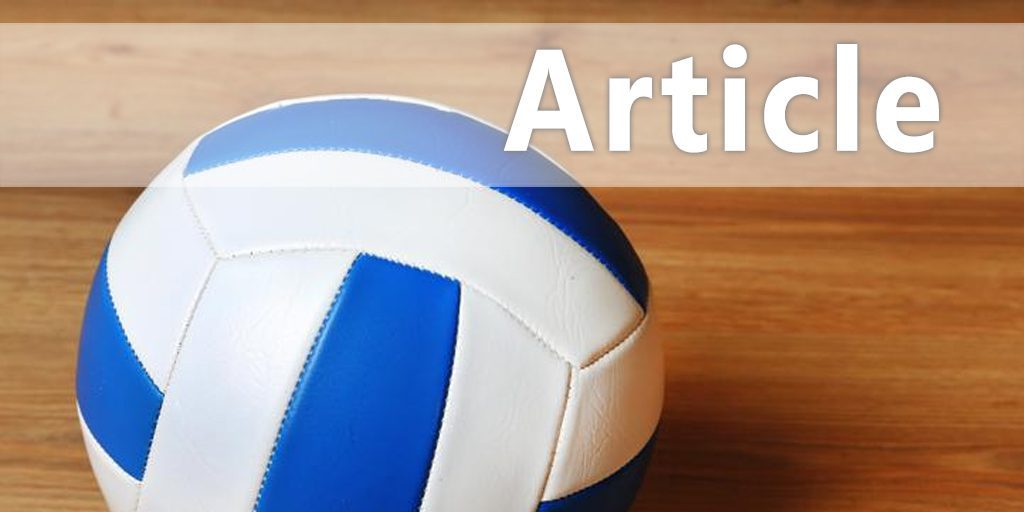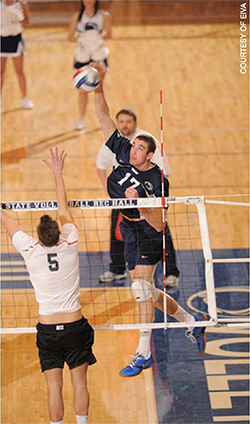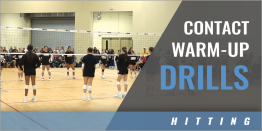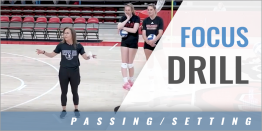|
Provided by: American Volleyball Coaches Association
Attacking the ball is no different than hitting a baseball, swinging a golf club or serving a tennis ball: mechanics are everything! Let's be very clear here from the beginning — an athlete does NOT have to be jacked or super-buff to bring the heat. But, he DOES have to execute good mechanics in order to increase velocity. When done correctly, this is known as "Bio-mechanic Efficiency," and will allow the athlete to use their body correctly to bring more consistency, more range, and most importantly, higher velocity.
Let's talk about the mechanics of a swing. We are going to assume that the hitter has already started his jump and is right-handed (obviously, if they are left-handed, everything mentioned here will be opposite). It is imperative that hitters double-arm lift as far back as possible. To get the most from the backswing, instruct the athlete to bend his wrists towards ceiling and notice that his arms will lift a few inches higher than if his wrists were straight. Then, swing both arms forward and up at the same time to get maximum height out of the jump. Once in the air, the shoulders should "open up," with the left shoulder pointing towards the net. The left arm should be lifted high and angled in front of the body. The athlete's attacking arm should be drawn back, like a bow and arrow. The elbow should be higher than the shoulder, and the hand should be open, facing away from his head. This turn of the hand is known as "pronation." When starting the swing, the athlete's left arm is going to start dropping, and his right arm will start to move forward. His elbow will naturally "lead," and his body will start to turn. When contacting the ball, the shoulders should be turned, or parallel with the net. He should contact the ball at the highest point possible in the jump, and point of contact should be made in front of the body. After contacting the ball, it is crucial that the athlete continue to follow through, allowing his attacking arm to come through to his body. He should NOT stop the swing after contact. Stopping the swing takes away power, and, more importantly, will end in a possible shoulder injury or surgery if continued over a pro-longed period. Think of it like this: a golfer wouldn't stop his golf swing as he contacts the ball, nor would a batter stop his swing when he contacts a baseball. One way to get this point across is to tell your hitters to let their right hand follow through to their left pocket or hip. As they follow through, hopefully the athlete's body starts to turn. Let it. When finishing the swing, his right shoulder should be pointing toward the net as much as possible. Sometimes, depending on the athlete's position, the set or the attacking choice, he will not be able to accomplish the follow-through with his shoulder turned afterward. A perfect example of this is a "cross-body" swing down the line from a left side attack. Obviously, this will not allow him to follow through with his shoulders. However, this move should be made at all times when the athlete is jump-serving, as this is a closed-loop circuit, meaning he controls everything from beginning to end. Teach your hitters to "stay tall" during the swing, turning on an axis rather than a pike motion. Think of a figure skater when they are spinning. They spin much faster when they are tight and in an upright position. The same principle is applied here when swinging. The attacker should remain upright, with as little piking motion as possible. One final note — this one is on the finish — to snap or not to snap? There are many schools of thought, but our working doctrine is that a wrist snap is less important as players grow physically and develop their skills. There is no need to actually use the key words "wrist snap." Snap is not really needed unless you are hitting a roll shot or down ball, as there is no evidence that a ball hit with top spin goes in the court any more than just a hard-hit ball. Smaller, younger players probably don't have the leaping ability to get over the net, so wrist snap might be necessary to effect topspin on the ball to drive it back down into the opponent's court. However, there are situations where a quick break of the wrist is necessary, such as topspin jump serves. As players increase their vertical and get stronger, the emphasis can be less on wrist snap and more on the ol' "jump high and hit hard."
|








